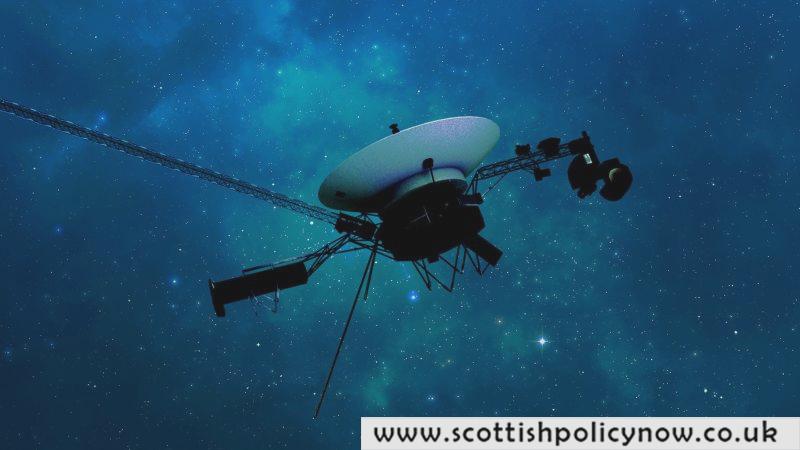For the first time in five months, NASA engineers have successfully received decipherable data from Voyager 1 after devising a creative solution to fix a communication glitch on humanity’s most distant spacecraft.
Voyager 1, currently 15 billion miles (24 billion kilometers) from Earth, is the oldest operating spacecraft, launched in 1977. At 46 years old, it’s encountered several technical issues in recent years.
The latest problem surfaced in November 2023, when the flight data system’s telemetry modulation unit began sending a pattern of unreadable code. Voyager 1’s flight data system collects information from its scientific instruments and combines it with engineering data reflecting the spacecraft’s health. This data is transmitted back to Earth as a binary code of ones and zeros.

For the past few months, Voyager 1 has continued to relay a steady radio signal to mission control on Earth, but without any usable data. On April 20, however, the mission team received the first coherent information about the health and status of the spacecraft’s engineering systems, indicating that Voyager 1 is operational and healthy.
“Today was a great day for Voyager 1,” said Linda Spilker, Voyager project scientist at NASA’s Jet Propulsion Laboratory (JPL). “We’re back in communication with the spacecraft. And we look forward to getting science data back.”
The breakthrough came after some trial and error, with engineers eventually tracking the problem to a single chip. After discovering the issue, the team attempted to restart the spacecraft’s computer system and send commands to investigate the glitch.
A command called a “poke” was sent on March 1 to run different software sequences in hopes of identifying the cause of the glitch. On March 3, the team noticed that part of the flight data system’s activity stood out from the rest of the garbled data. Though the signal wasn’t in its expected format, an engineer with NASA’s Deep Space Network was able to decode it.
The decoded signal included a readout of the entire flight data system’s memory. By analyzing the data, the team discovered that about 3% of the system’s memory was corrupted due to a single faulty chip. The loss of code stored on the chip caused Voyager 1’s data to become unusable.
With no way to repair the chip, the engineers chose to store the affected code elsewhere in the system’s memory, dividing it into sections and storing them in different spots. Given the immense distance between Voyager 1 and Earth, it takes a radio signal about 22.5 hours to reach the probe and another 22.5 hours to get a response.
After adjusting the code and sending the new command on April 18, the mission team finally received Voyager 1’s response on April 20, confirming that their clever workaround had been successful. The team now plans to continue relocating other affected parts of the system’s software, including those responsible for returning the valuable science data Voyager 1 collects.
Despite being initially designed for a five-year mission, both Voyager 1 and its twin, Voyager 2, launched in 1977 and have far surpassed their expected lifespan. The probes ventured through the outer reaches of the solar system, flying by Jupiter, Saturn, Uranus, and Neptune, and are now the only spacecraft operating in interstellar space, beyond the heliosphere—the Sun’s bubble of magnetic fields and particles.
Voyager 2, operating normally, is over 12.6 billion miles (20.3 billion kilometers) from Earth. While both spacecraft have encountered unexpected technical issues, including a seven-month communication blackout with Voyager 2 in 2020, the mission team has managed to resolve most of them.
“We never know for sure what’s going to happen with the Voyagers, but it constantly amazes me when they just keep going,” said Voyager Project Manager Suzanne Dodd. “We’ve had many anomalies, and they are getting harder. But we’ve been fortunate so far to recover from them. And the mission keeps going.” The team estimates that in a few weeks, they should start receiving science data from Voyager 1 again, providing more insights into the outer reaches of our solar system.








